
I love seeing gaming headsets from audio companies, because they approach it from the audio side first, not the gaming side. So I know they’re going to sound great. And Audeze’s newest wireless gaming headset, the Maxwell, does sound great. But sounding great is just one aspect of what makes the best gaming headsets, well, the best.
The Maxwell is a large, wireless over-ear gaming headset with a steel and aluminum frame, a detachable boom microphone, and 80+ hours of rated battery life. It features newly-designed 90mm planar magnetic drivers (more on what that means later) and an out-of-the-box sound profile that’s tuned for gaming. And again, it sounds fantastic. Design-wise, it’s a departure from Audeze’s previous wireless gaming headsets, the Penrose and the Mobius, which were smaller, lighter, and mainly made of plastic.
The Maxwell is available now and comes in two versions: a PlayStation version ($299) and an Xbox version ($329). Both versions work with PC, but the Xbox version is licensed by Microsoft and includes an embedded Dolby Atmos license (both versions of the headset also work with existing Dolby Atmos licenses). We reviewed the PlayStation version.
Design and Comfort of the Maxwell
The Maxwell is a large, sturdy headset with an aluminum and steel frame and glass-infused nylon earcups with plush, leatherette-covered foam earpads. The headset has moderate clamping force, which, combined with its weight of 1,06 pounds (490g), means you’ll definitely feel it on your head.

In the many hours I spent wearing this headset, I didn’t once feel discomfort from the strength of the clamping force or the overall heftiness of the unit. I did find the large size of the earcups to be a little inconvenient while traveling — specifically, it was difficult to lean against anything with such bulky earcups — but that shouldn’t be too much of an issue if you plan on using the Maxwell for its primary purpose of at-home gaming.


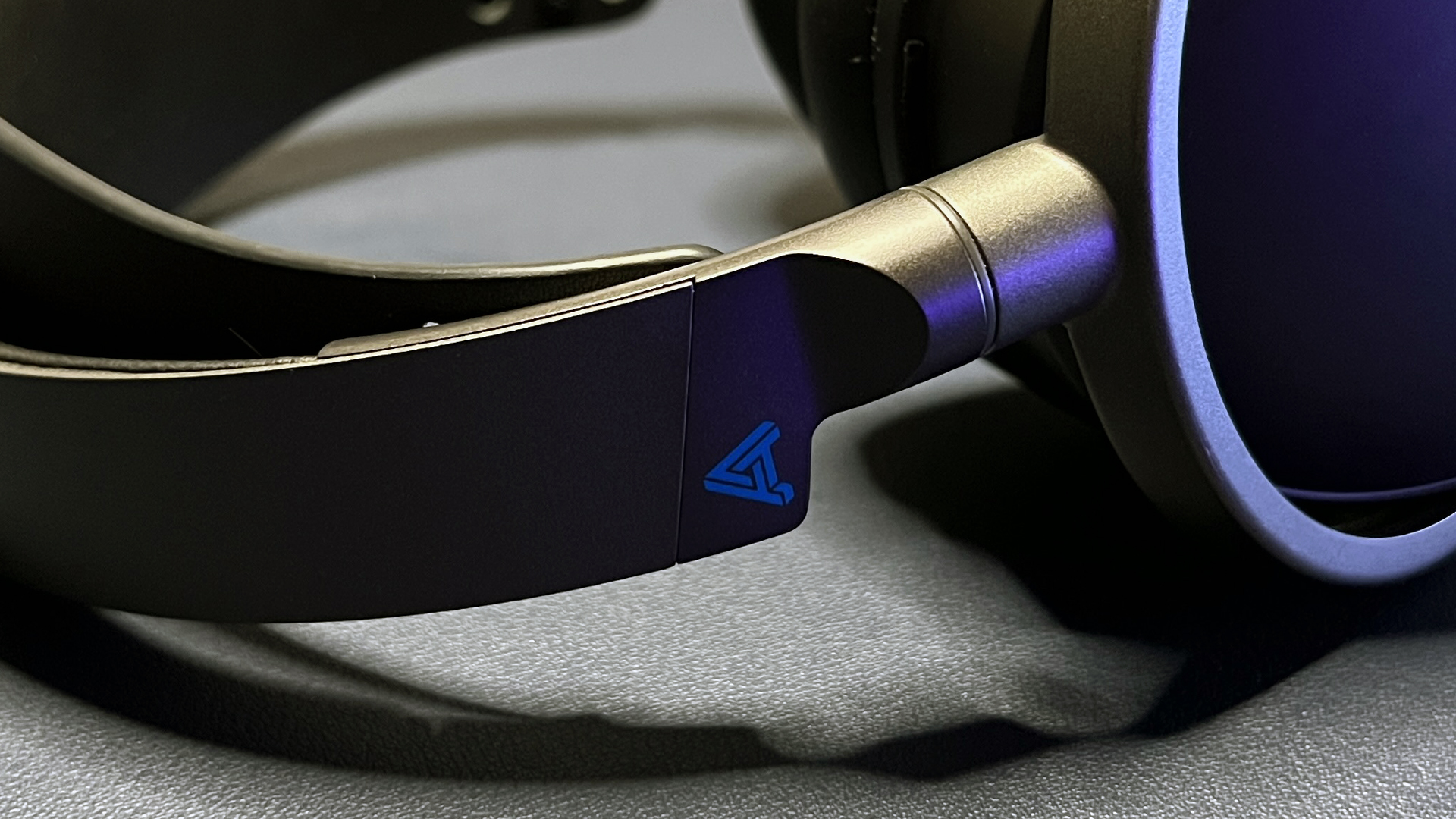
The Maxwell isn’t the sleekest headset — in fact, it looks a little clunky next to some of the best wireless gaming headsets, especially headsets designed to cross over into the lifestyle category, such as the Razer Barracuda Pro Wireless. While headsets like the Barracuda Pro Wireless have at least sort of attempted to sculpt down the size of their earcups, the Maxwell simply owns its bulkiness. I’m sure some of the Maxwell’s earcup size and chunkiness have to do with the dual-chamber design, which acoustically isolates the driver from the headset’s electronics. But, while I find this forgivable (in pursuit of audio quality!), there’s no denying that this headset is huge.
The good news is that it feels very sturdy (the bulk probably helps with that), with a steel headband, aluminum yokes, and thick, weighty earcups. It’s a big step up from Audeze’s previous wireless gaming headsets, the Penrose and the Mobius, which were largely made of plastic.


The Maxwell’s understated, monochromatic design doesn’t scream “gamer,” but this isn’t too unusual. Many of the best gaming headsets, especially premium ones, are moving in that direction. The headset’s frame is a dark gunmetal gray, while the leatherette parts (earpads, headband strap, and headband padding) are black. ‘Audeze’ is printed across the top of the headband in light gray, and the company’s ‘A’ logo is printed in blue on both sides of the headband, just above each yoke. The headset has no lights, aside from a pinprick-sized LED indicator on the left earcup that flashes different colors to signal connection status and battery life.



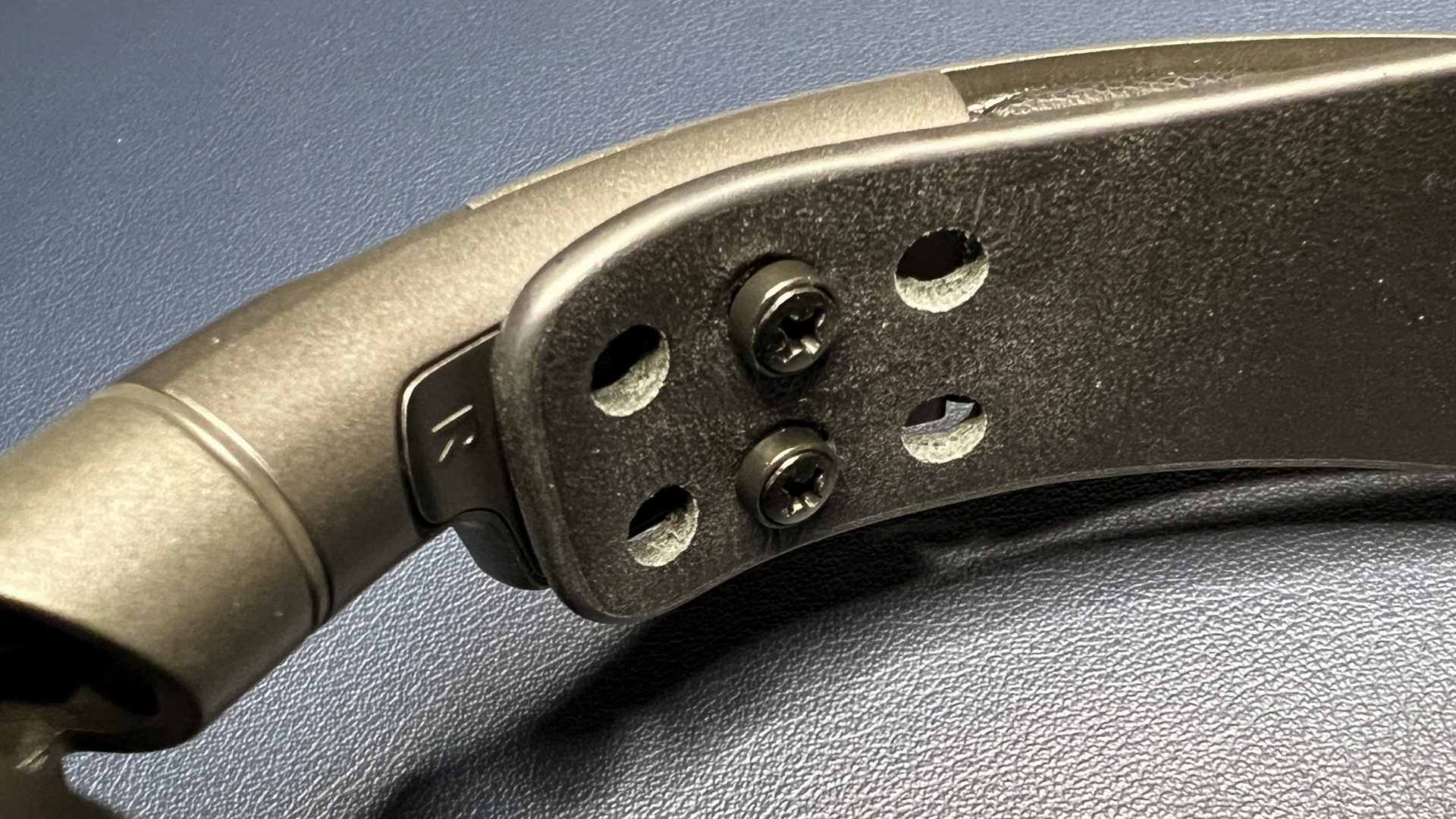
The earcups swivel in both directions (and also swivel flat for storage) and tilt for comfort. The only major point of adjustment, however, is the leatherette tension headband, which can be shortened or lengthened via three sets of notches on each side. The headband is easy to adjust (you can just pull it off of the screws, you don’t have to break out a screwdriver, or anything), but this system does seem a bit limited. After all, it only allows for five lengths — six, if you count removing the strap completely.
I was able to find an adjustment that worked for me, but I would have preferred more nuance. I suppose you could use a leather punch to add additional holes to the strap, but ideally, you wouldn’t have to go to those kinds of lengths just to make a $300+ headset fit. SteelSeries’ Arctis Nova headsets have a similar suspension headband system, but those headsets also have independently height-adjustable earcups, while the Maxwell’s earcups are fixed.


The Maxwell features soft, foam, leatherette-covered earpads that are contoured to fit the curvature of your skull. They’re similar to the earpads on the Audeze LCD-GX, but because the Maxwell has smaller earcups, the contour is less dramatic. The headset doesn’t have active noise cancellation, but the earcups do an excellent job of passive noise cancellation. The leatherette stays fairly cool for leatherette, but it still retains more heat than mesh fabric-covered earpads (such as those on the SteelSeries Arctis Nova 7).
The earpads are replaceable and twist off easily. Audeze doesn’t currently have replacements for the Maxwell listed on its website, but it does have replacements for the Penrose/Mobius gaming headsets listed. So I assume the Maxwell replacements will make their way to the shop eventually.
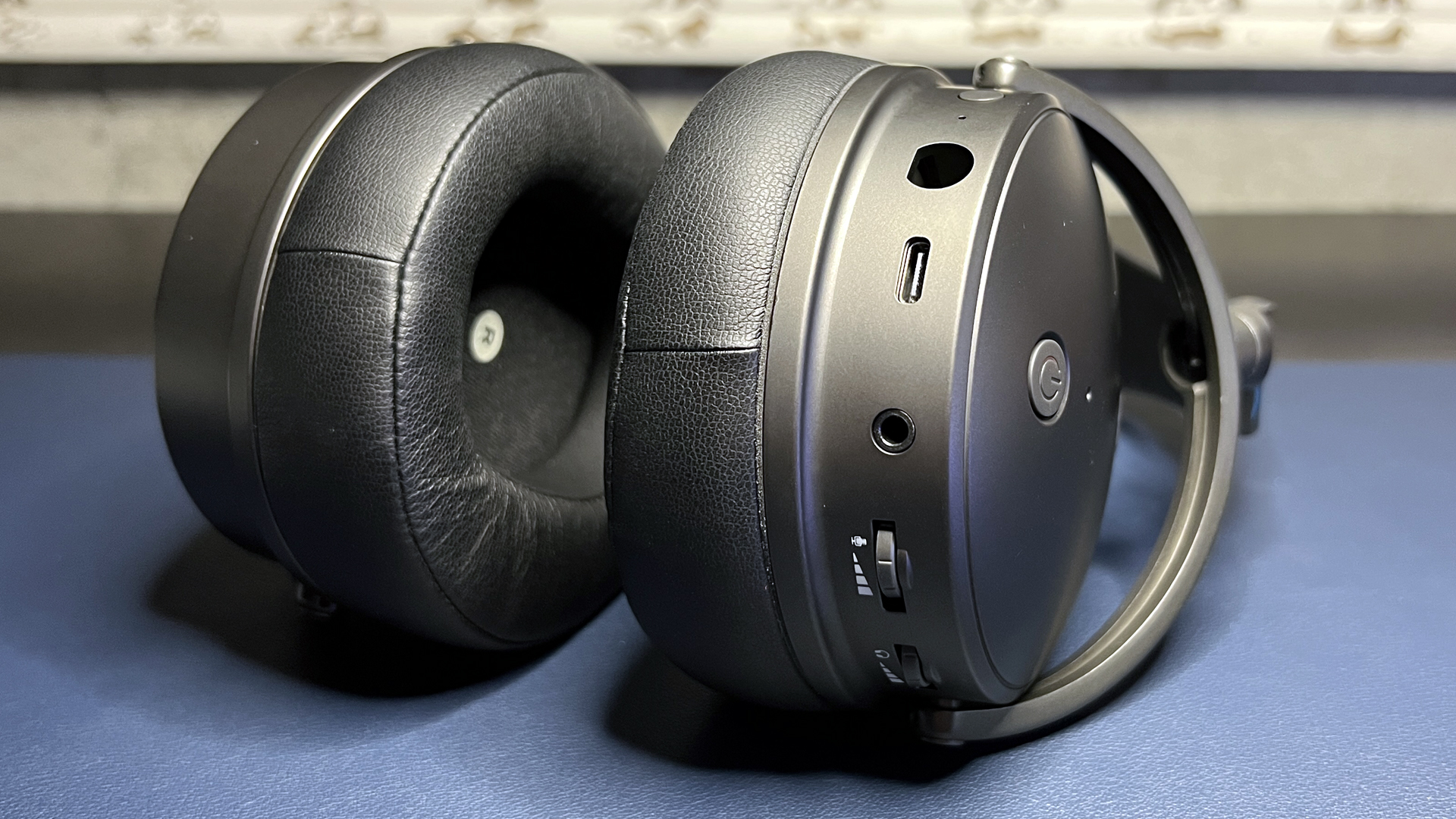

The left earcups houses all of the Maxwell’s controls and ports. On the left earcup’s face, there’s a power button that also acts as a play/pause (single press) and Bluetooth pairing (double press) button, as well as a physical microphone mute switch. On the edge of the earcup, starting at the front, there’s a button for toggling the headset’s microphone AI noise reduction feature, a 3.5mm microphone jack, a USB-C port, a 3.5mm aux jack, a clickable wheel for chat mixing and sidetone, and a clickable wheel for volume. Most of the buttons and wheels on this headset have multiple functions, which makes them a little confusing at first — but no more confusing than most multi-mode wireless gaming headsets these days.
The Maxwell notably does not have a way to manually switch between wireless connections (2.4GHz and Bluetooth), which is frustrating as it also does not allow for simultaneous listening on those two connections. Instead, the headset is designed to automatically switch between those two connections, prioritizing Bluetooth. I have a lot of thoughts on this, but we’ll dig deeper into it in the Battery Life and Wireless section.
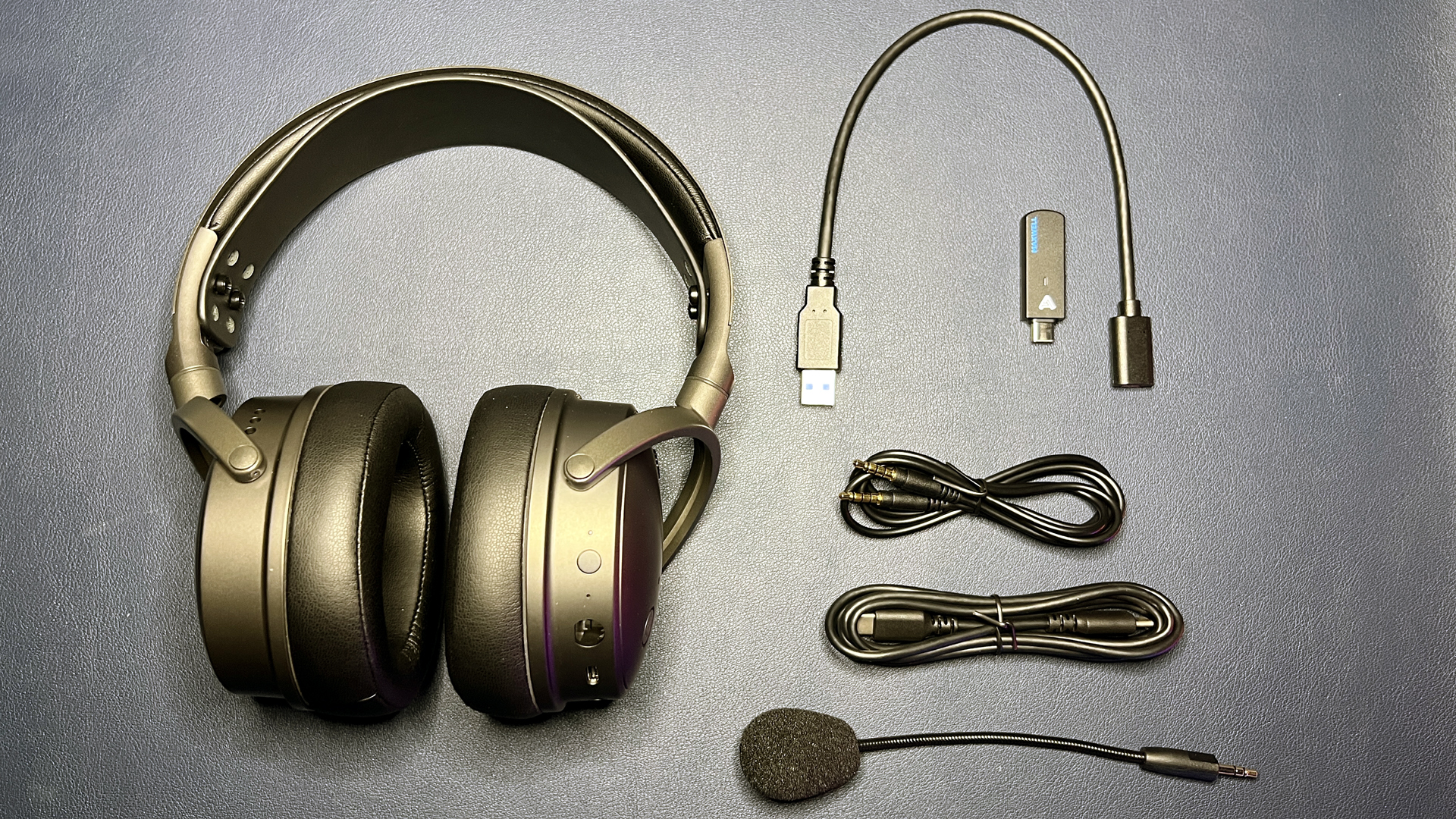
The Maxwell comes with several cables and accessories: a detachable boom microphone, a 2.4GHz wireless USB-C dongle, a 1-foot USB extender, a 4-foot aux cable, and a 5-foot USB-C to USB-C cable. It does not come with a carrying case (or even a protective cloth bag), which is a little disappointing (the large, unblemished earcups make me wary of stuffing it into a backpack unprotected). While it’s true that most gaming headsets don’t come with carrying cases, I think higher-end headsets should. After all, spending $300+ on a headset is much more palatable if you can use it for more than just gaming.
Audio Performance of the Maxwell
Most gaming headsets (and most headphones and speakers in general) have dynamic drivers, which produce sound using a passive diaphragm attached to a moving voice coil — which is why dynamic drivers are also called “moving coil” drivers. Audeze specializes in a different type of driver: planar magnetic. Planar magnetic drivers produce sound using a diaphragm with the conductor embedded inside it (instead of attached to it, like a voice coil is), positioned between two magnetic arrays. This allows for more detailed control over the diaphragm, which means (in theory, at least) more accurate sound reproduction.
The Maxwell sports newly designed 90mm planar magnetic drivers with a frequency range of 10 Hz - 50,000 Hz. This is much wider than the average frequency range of gaming headsets, which mostly stick to a range of 20 Hz - 20,000 Hz. The $350 SteelSeries Arctis Nova Pro Wireless has a slightly higher range of 20 Hz - 22,000 Hz (up to 40,000 Hz when wired) and the $270 Corsair Virtuoso RGB Wireless XT has a range of 20 Hz - 40,000 Hz. Both of those headsets have dynamic drivers, but the $330 HyperX Cloud Orbit S, which also uses planar magnetic drivers, has the same frequency range as the Maxwell. The Maxwell is an active headset with an internal DSP and a built-in DAC, so it will need to be turned on even if you’re using a wired analog connection.
The Maxwell’s default sound profile is tuned for gaming — which makes sense, as it’s a gaming headset — with punchy lows, slightly pulled-back mids, and bright, slightly elevated highs. The headset’s wide soundstage did an excellent job of layering details in the jungles of both Uncharted 4 and Shadow of the Tomb Raider, two of my favorite games for immersive environmental audio.
I made it through enough of The Callisto Protocol to confirm that the Maxwell’s crisp, detailed audio and passive noise isolation is much too impressive for me to be playing horror games with. Directional sound is excellent — even without spatial audio — in games like Fortnite and Overwatch 2, especially on the headset’s “competition” EQ preset (there’s a “footsteps” EQ preset as well, but the highs are a little too high for me). The Maxwell doesn’t include spatial audio in its PC app, but it does support Sony’s 3D audio on PS5.
But while the Maxwell’s default sound profile is good for gaming, it’s less so for listening to music. Luckily it only takes a handful of EQ adjustments to rein in the headset’s aggressive highs and pump up the mid-range for a balanced, relatively neutral listening profile. The app has four customizable EQ presets that, once configured, save to the headset itself — so you’ll only have to do this once.
Once I had the headset’s EQ sorted out, listening to music on the Maxwell was a pleasure. It did a great job of producing full-bodied, clean-sounding bass in Knife Party’s Boss Mode and maintaining the power of the low beat in Kaskade’s POW POW POW without getting too muddy. In K-391’s Lonely World, vocals and sustained mids sounded full and balanced (again, once I adjusted the EQ — the mids are a little recessed out of the box).
Microphone of the Maxwell
The Maxwell comes with a detachable boom microphone, which plugs into the 3.5mm mic jack on the left earcup. The mic sits at the end of a 4-inch gooseneck arm and comes with a removable foam pop filter. It appears to be the same boom mic that came with the Penrose and the Mobius, but the Maxwell features a built-in AI-powered noise suppression feature that works to filter out background noise while you’re talking.


The boom mic sounds pretty good — it adds a certain broadcast-quality fullness to your voice that you won’t get from most gaming headset mics — but it’s a little finicky. Depending on the connection, it picks up quite a bit of self noise and often sounds fuzzy, especially in the higher mid-ranges.
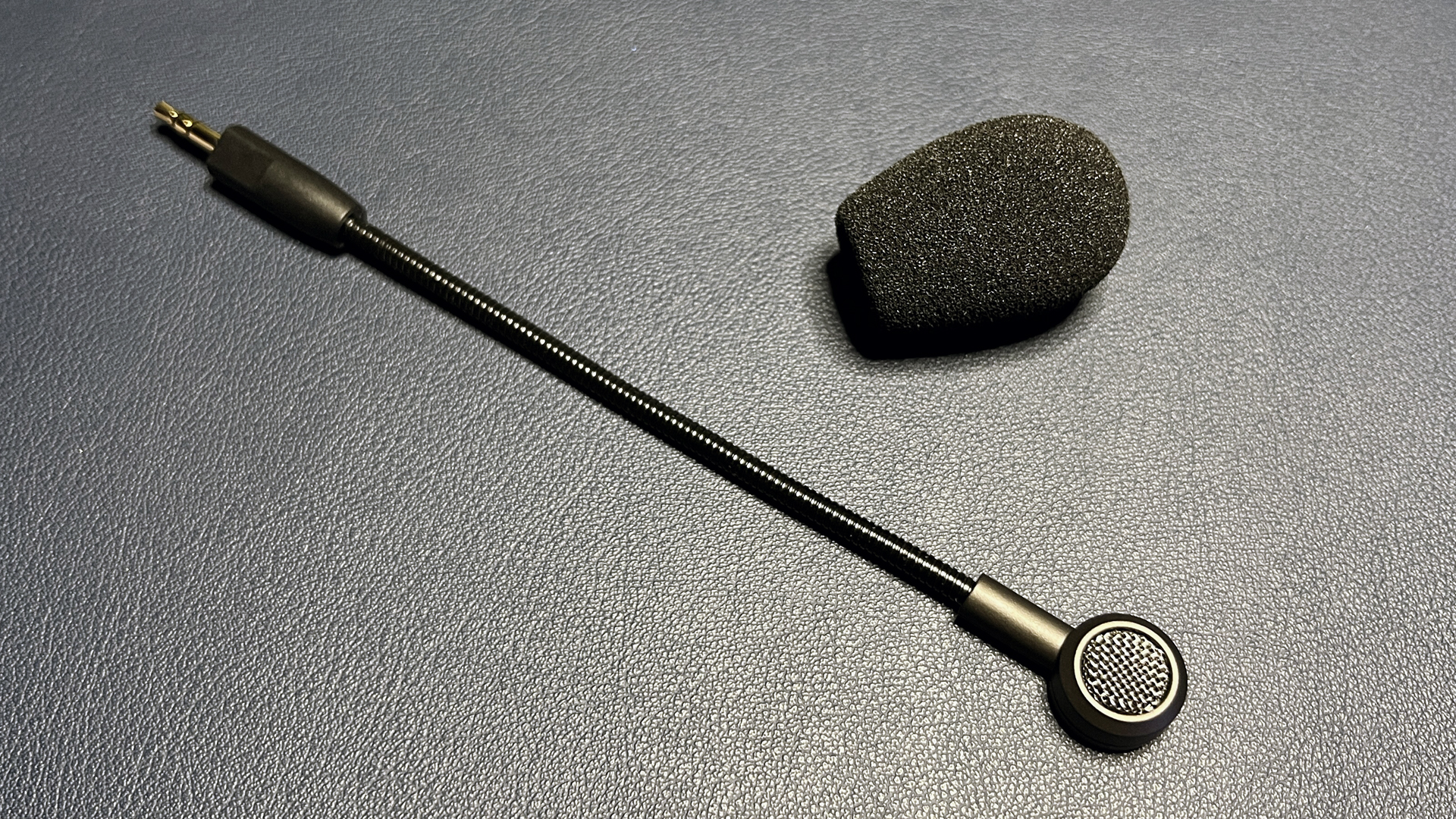
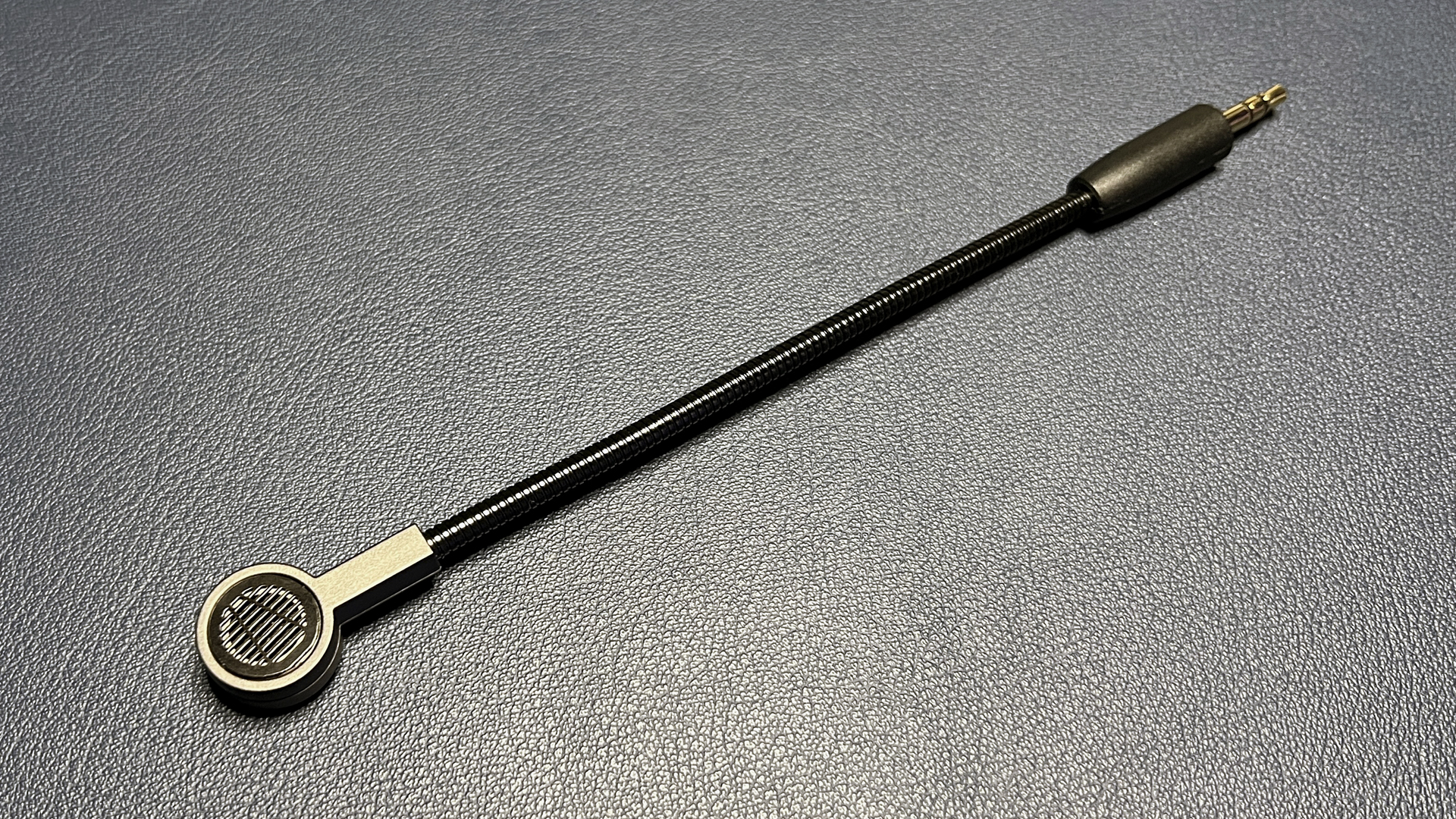
The AI noise suppression feature has two levels (high, low), and did a great job of filtering out consistent background noise, such as my 37 PC case fans, without thinning out or otherwise distorting my voice. It even managed to dull the clicky sounds of my keyboard to the point where the people I was talking to were still able to understand my words perfectly. (It didn’t, however, disguise the fact that I was typing on a very clicky keyboard during our Tom’s Hardware morning meeting.)

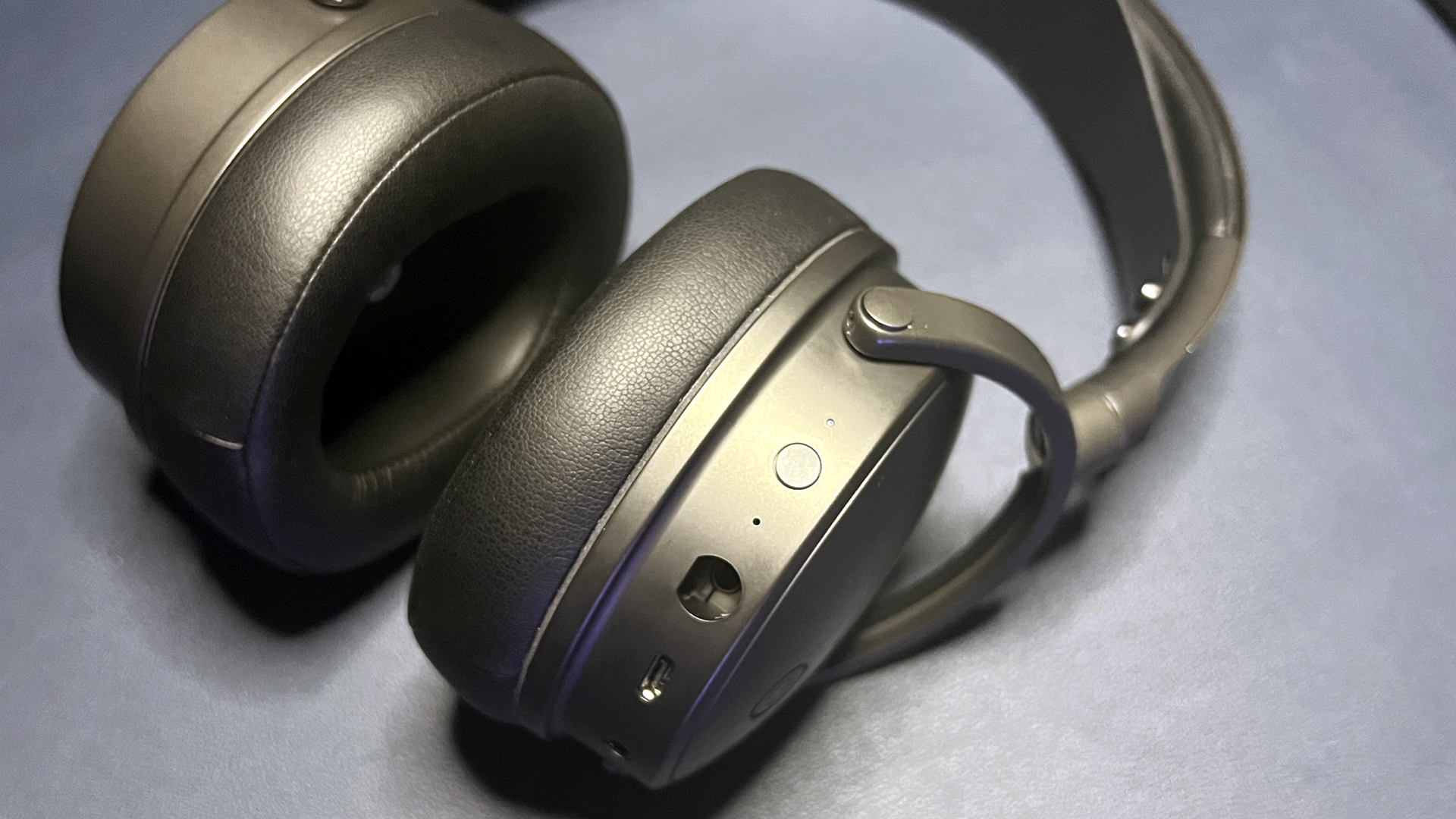

When you unplug the boom mic, the Maxwell switches over to its built-in mics. That’s right, this headset has an on-board beamforming microphone array for when you don’t need (or want) an external boom mic. It’s nice to see a gaming headset with both options, as attached boom mics do not look very cool when you’re not sitting in front of a PC or a TV. With that in mind, the Maxwell’s built-in mics are mostly for convenience — they’re nowhere near as good as the boom mic, and, frankly, they’re not even particularly impressive for built-in mics (the beamforming array in the Barracuda Pro Wireless is much better). But they work well enough if you need to take a phone call (indoors) and you don’t have the boom mic handy.
Ultimately, while the Maxwell’s mics will work in most casual situations (how good do you really need to sound over Discord), if you’re streaming, podcasting, or otherwise creating content, it’s always worth investing in one of the best gaming microphones.
Specs
Software of the Maxwell
The Maxwell works with Audeze’s Audeze HQ software, which is designed to support the brand’s wireless gaming headsets. Unfortunately, at the time of this review, the Maxwell software situation is still... let’s say, incomplete. Specifically, the desktop version of Audeze HQ does not yet include an EQ for the Maxwell (Audeze assures me it’s coming in a future update). This is inconvenient, because — as I mentioned earlier — the headset does need some tweaking if you’re planning on using it in a non-gaming capacity.
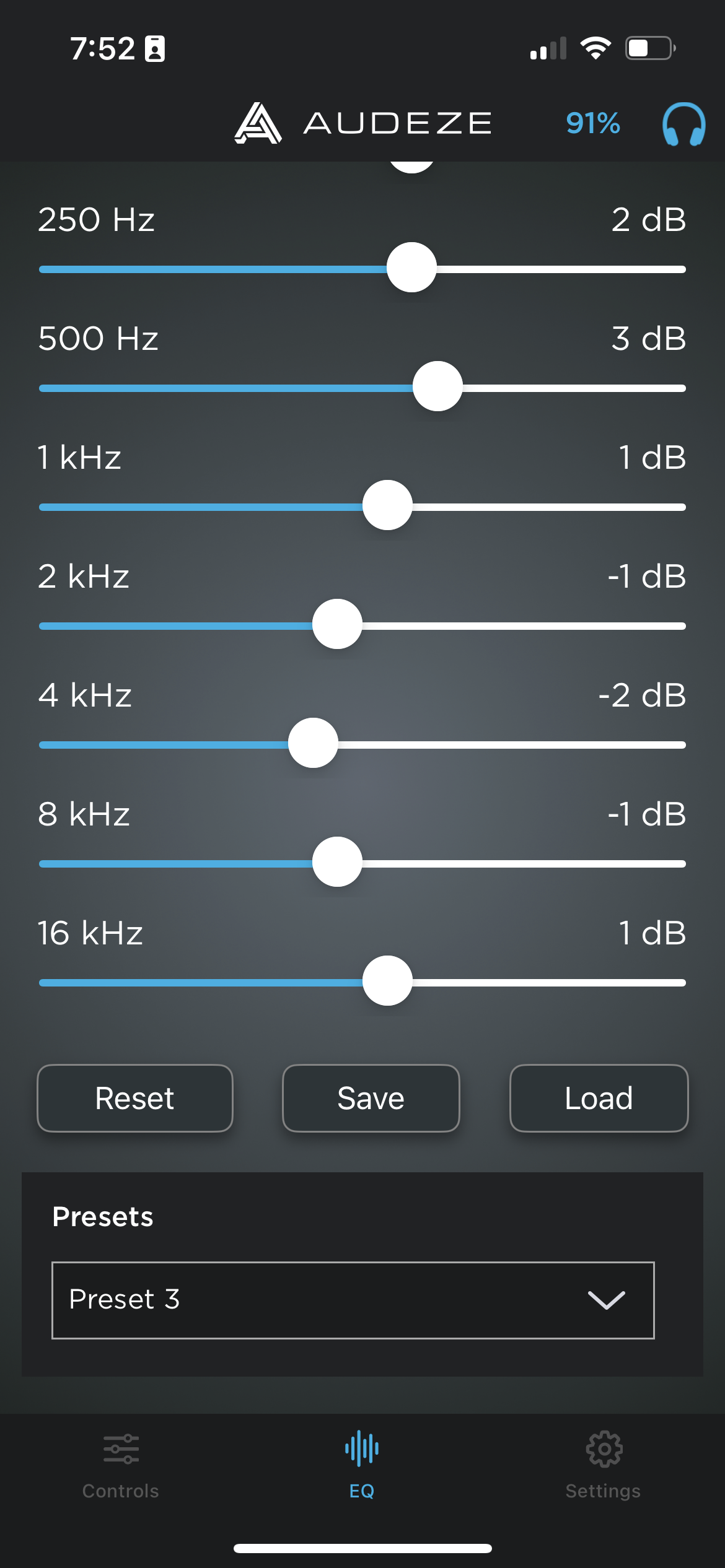
Luckily, the mobile (iOS and Android) version of Audeze HQ does include an EQ, so you can make your adjustments in the mobile app and they will save to the headset’s onboard memory. However, you will need to disconnect the headset’s dongle from your PC to use the mobile app.
EQ aside, Audeze HQ also has a handful of other useful features — such as the ability to update your device’s firmware and your dongle’s firmware, which you’ll need to do when you first take the headset out of the box. You can also adjust the headset’s auto-shutdown timer and voice prompt volume, and toggle the volume limiter on or off.

You can also use Audeze HQ to control the mic sidetone (how much of your own voice gets pumped into the headset), mix between game and chat audio, and select an EQ preset. You can perform all of these actions directly on the headset, using the multi-function chatmix and volume wheels. Clicking the chatmix wheel once lets you adjust sidetone, while clicking it twice toggles sidetone on and off; clicking the volume wheel once lets you scroll through tracks, while clicking it twice lets you scroll through the EQ presets. The Maxwell comes with six pre-tuned presets and four customizable presets, which, again, can only be customized using the mobile app for the time being. The presets include “Audeze” (the out-of-the-box preset), treble boost, bass boost, immersive, competition, and footsteps.
Wireless Performance of the Maxwell
The Maxwell has four connectivity options: 2.4GHz wireless, Bluetooth 5.3, wired via USB-C, and analog. While the headset can connect to both 2.4GHz wireless and Bluetooth 5.3 at the same time, it can’t play audio from both wireless sources simultaneously, like the Corsair Virtuoso RGB Wireless XT or the Logitech G735 can. It can, however, play dual-source audio simultaneously provided one of the sources is wired — e.g., it can play audio simultaneously over an analog connection and Bluetooth. It’s an active headset with an internal DSP and a built-in DAC, so it will need to be powered on even if you’re using a wired analog connection.
This isn’t necessarily an issue, as most gamers don’t need a headset that can play from two wireless sources at once — however, the Maxwell also doesn’t allow you to manually switch between the two sources. Instead, it switches between the two sources automatically, prioritizing Bluetooth. It will automatically switch to Bluetooth if you get a phone call, or if you open an app on your phone that is playing sound.
The reasoning behind this makes some sense — it’s so you won’t miss phone calls. As a millennial, I am extremely averse to talking on the phone (for any reason, ever), so that probably colors my opinion. But, phone calls notwithstanding, it’s still incredibly frustrating to not be able to manually switch back to the 2.4GHz wireless connection without silencing your phone completely. I pick up my phone and fiddle with random apps all throughout the day, and any app that has sound will trigger the switch. Also, while the switch to Bluetooth is instantaneous, the switch back takes a second (which makes sense, logically, but is frustrating if you’re trying to get straight back into your game).
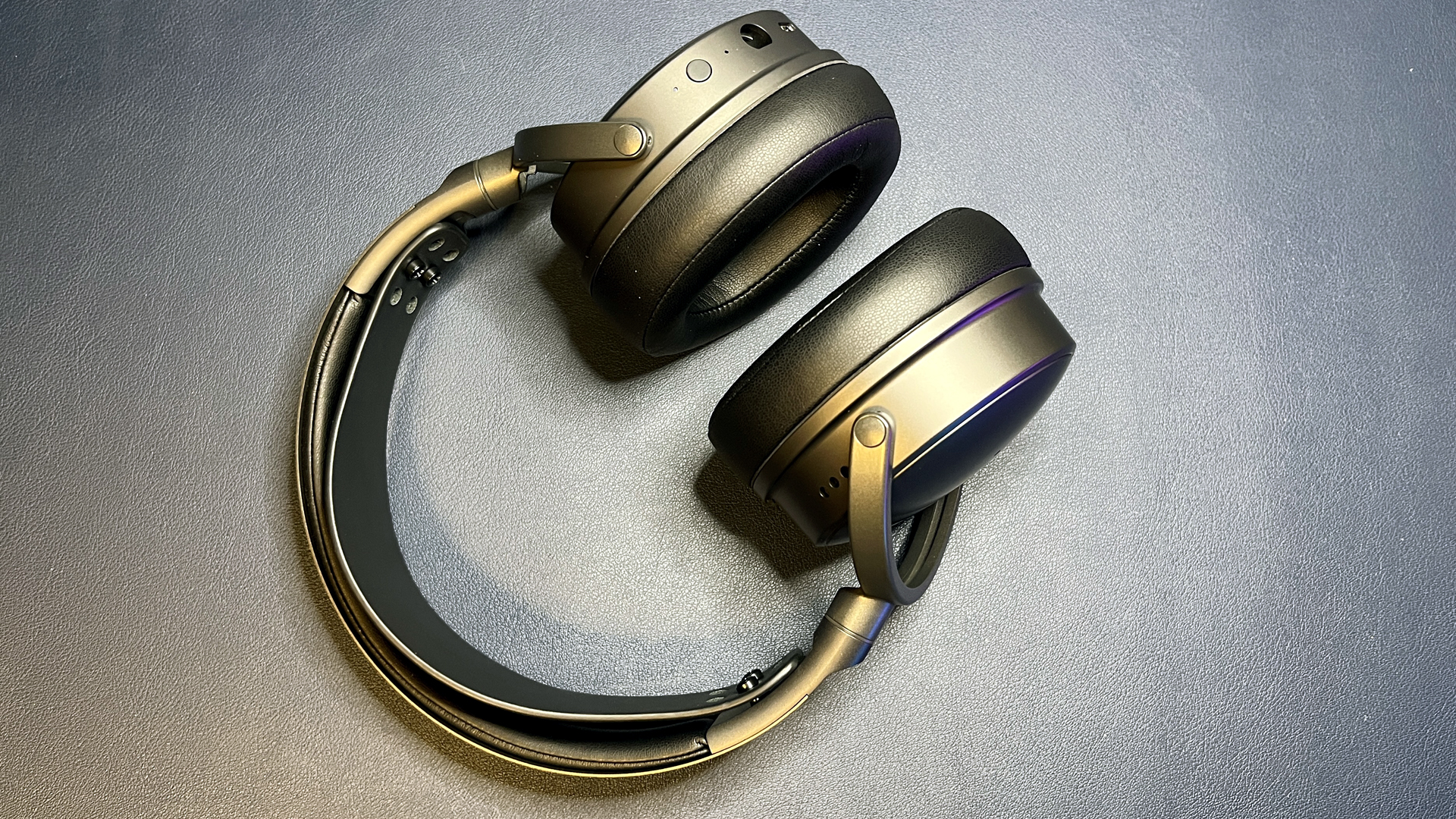

Connection switching aside, both of the Maxwell’s wireless connections have impressive strength and range. The Maxwell is the first headset I’ve used that’s been able to maintain a wireless connection when I walk from my home office to my kitchen — which isn’t very far away, but i separated by a four-foot-thick industrial factory wall made of steel and concrete (nothing has been able to penetrate this wall — until now). As for actual range: I wore the headset when I took my dogs on a walk, and it was still able to pick up my PC audio perfectly when I was outside, six stories below my apartment and about 50 yards from the building.
Battery Life of the Maxwell
The Maxwell also excels in battery life. Audeze rates the headsets battery life at 80+ hours over both 2.4GHz wireless and Bluetooth, which is... very, very good, especially for a planar magnetic headset. Shockingly good. (But not HyperX-Cloud-Alpha-Wireless-300-hours good.) I took the fully charged Maxwell on a flight to Tokyo (and back), and the battery was still at 75% after almost 30 hours of continuous listening (at higher than 50% volume level) — so Audeze’s estimation looks to be slightly conservative. The headset also supports fast charging, so a mere 20 minutes of charging time will get you 20 - 30 hours of playback.
Bottom Line
The Maxwell sounds fantastic, whether you’re gaming, chatting, or listening to music. You won’t find a better-sounding gaming headset at (or near) this price point. It’s also surprisingly comfortable, despite being one of the larger and heavier headsets we’ve tried, and its 80+ hour battery life far outlasts most of the competition (though, so does its weight). The Maxwell makes more sense for the gamer-leaning-audiophile than does the Audeze LCD-GX, which is basically just an audiophile headset with a mic, and it’s also much cheaper.
But there’s more to gaming headsets than being really, really... really ridiculously great-sounding. (A lot more, actually.)
I didn’t have too many problems with the Maxwell’s wireless connectivity — not counting the purposeful lack of control over connection switching — but I did have some. Occasionally the dongle wouldn’t connect (this happened more often when it was plugged into a lower power USB port or a USB hub), and in order to change the EQ in the mobile app, I had to unplug the dongle. Also, the mobile app is the only place you can change EQ settings (for now). There have been firmware updates since the headset launched, and I’m sure there will be more, but this is something to keep in mind.
For a little less ($250), Razer’s Barracuda Pro Wireless gaming headset is lightweight, has active noise cancellation and excellent beamforming mics, and comes with a nice travel case. It can’t step to the Maxwell in terms of audio quality, but everything else works much better. For a little more ($350), SteelSeries’ Arctis Nova Pro Wireless sounds very, very good and also features active noise cancellation and simultaneous audio over 2.4GHz wireless and Bluetooth. But if audio is your main priority by far, the Maxwell is hard to beat.
MORE: Best PC Gaming Headsets
MORE: Best Wireless Gaming Headsets
MORE: Best Gaming Keyboards
MORE: Best Gaming Mouse







